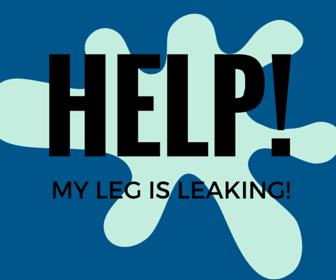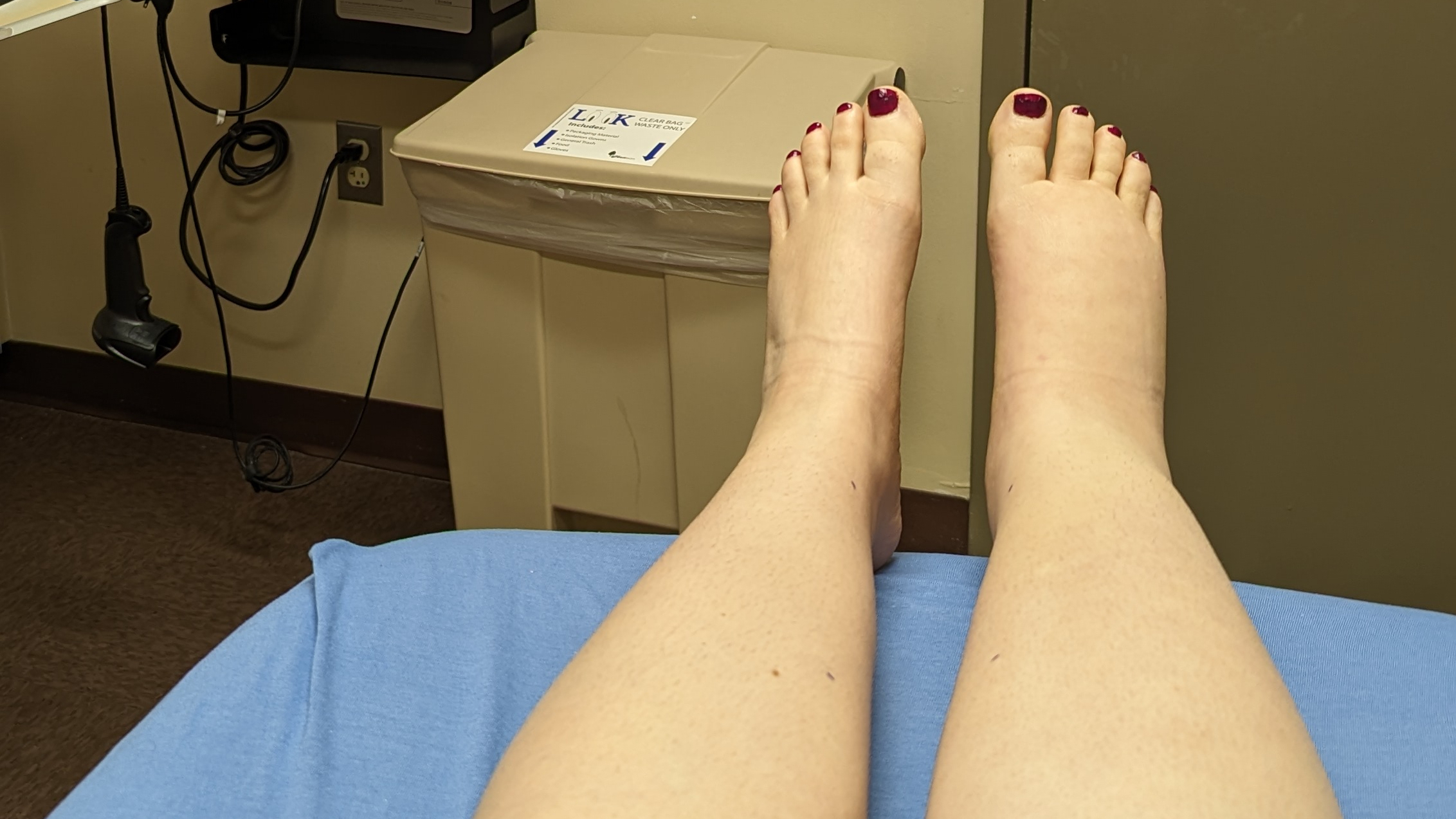Edit: we recently revisited this topic in more detail – you can read that post here!
Since I was around eighteen years old, I’ve experienced the occasional leaking of fluid from my right leg. I remember when it first happened, during a final exam in my senior year of high school. There was so much fluid that my shoe was completely soaked, and I sat through the rest of the exam embarrassed and silently freaking out, with no idea what was happening or why. It’s occurred probably a handful of times since then, but this past week it’s been happening more often than usual.
If you’re anything like me, you’ve been baffled and a little freaked out by your leaking limbs and would like to know what the hell is going on. So, without further ado, here is my short-but-sweet guide to lymphorrhea.

What’s leaking out of my leg/arm/etc?
The light, amber-colored fluid that is beading and trickling from your skin is called lymph. The leaking or weeping of this protein-rich lymph is known as lymphorrhea.
What causes this to happen?
Insect bites, abrasions, cuts, wounds, or cracks in the skin can enable the lymph fluid to seep out. Whenever I’ve had it, it drains from an extremely small break in my skin about the size of a pore.
What complications can it cause?
There are two main complications that lymphorrhea can spell out for lymphies, one of which being infection. The lymph fluid is considered a natural food source for bacteria, meaning the wound becomes an entry point for the bacteria to enter your body and cause infections such as cellulitis, lymphangitis, or erysipelas. Lymphorrhea is also highly caustic to skin tissue, and when the drainage is left untreated, it could quickly become a large, gaping wound. When this happens, skin grafts are often required.
How do I avoid it?
The best thing you can do to avoid getting lymphorrhea is to take care of your skin. Keep it moisturized, as dry skin will lead to cracking and could cause the fluid to leak. Also, avoid cuts, bites, and scrapes if you can. Obviously it’s difficult to avoid these things to a T (unless you want to enclose your affected limb in a bubble!), but if you’re careful then your chances of contracting it will be lessened.
What do I do if I get it?
If you spring a leak, don’t worry – there are things you can do to treat it. First, you should clean the area where the fluid is leaking to reduce infection. Then, apply a moisturizing lotion to help heal the skin and protect it from further breakdown. Dress the wound with clean, absorbent, non-sticky bandages, and then wrap your limb with compression bandages to help stop the drainage. With this added pressure, the leaking should stop within one or two days. Don’t forget to change the bandages often, as they’ll become wet and uncomfortable from the lymph. When you’re at rest, elevate that sucker! Once the leakage has stopped and your skin is restored, you can don your usual garments again.
So there you have it – the basics of lymphorrhea and how to treat it. I hope you’re all doing well, and keeping good care of your body!
xxox alexa




Leave a Reply to James HookerCancel reply